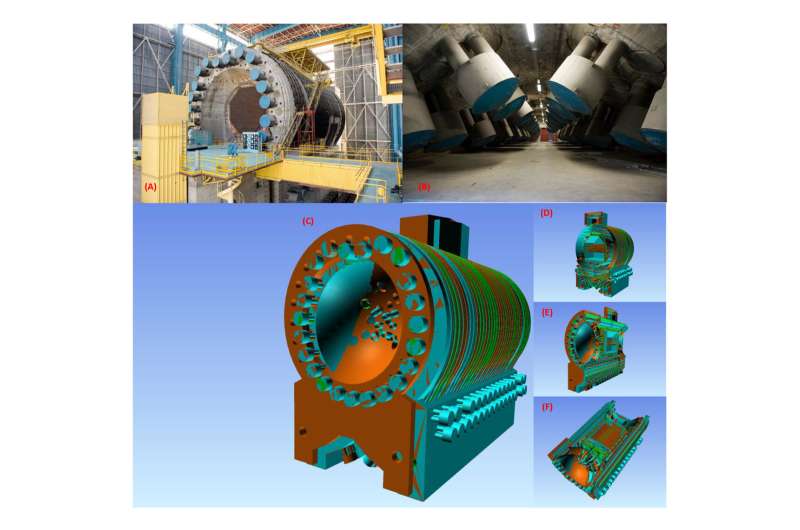February 6, 2023 report
This article has been reviewed according to Science X's editorial process and policies. Editors have highlighted the following attributes while ensuring the content's credibility:
fact-checked
peer-reviewed publication
trusted source
proofread
Using muon detectors to remotely create a 3D image of the inside of a nuclear reactor

A team of physicists affiliated with several institutions in France has developed a way to use muon detectors to create 3D images of difficult-to-access objects, such as a reactor inside a nuclear plant. The research is published in the journal Science Advances.
Prior work has shown that muon detectors can be used to create 2D images of the inside of an object, such as an ancient Egyptian pyramid. Such detectors work similarly to X-ray machines. The detectors record collisions from muons that are constantly raining down on the planet, and also the changes that occur when they pass through other material, such as rock or metal. Recording such collisions over a period of time can produce an image.
Other teams have created 3D images of objects using muons, but in a very limited way. In this new effort, the group sought to create a 3D image of the reactor inside of Marcoule, a retired nuclear power plant in France.
The team began by making two major adjustments to the process used by prior groups: More detectors were required and the software used to stitch all the imagery generated from a large number of detectors needed improvement. Once they had the right number of detectors and updated the software with an algorithm used in medical scanners, they set the detectors in place around and below the reactor. Because muons are not nearly as plentiful as X-rays, the detectors were monitored for several days and also had to be moved around to gather enough data.
The resulting 3D images were clear enough that team members were able to make out individual objects such as cooling pipes. They suggest their effort is a proof of concept, showing what could be done with future efforts. They note that their approach could be easily modified for use in other applications, such as creating 3D images of the insides of the Great Pyramid.
More information: Sébastien Procureur et al, 3D imaging of a nuclear reactor using muography measurements, Science Advances (2023). DOI: 10.1126/sciadv.abq8431
Journal information: Science Advances
© 2023 Science X Network





















